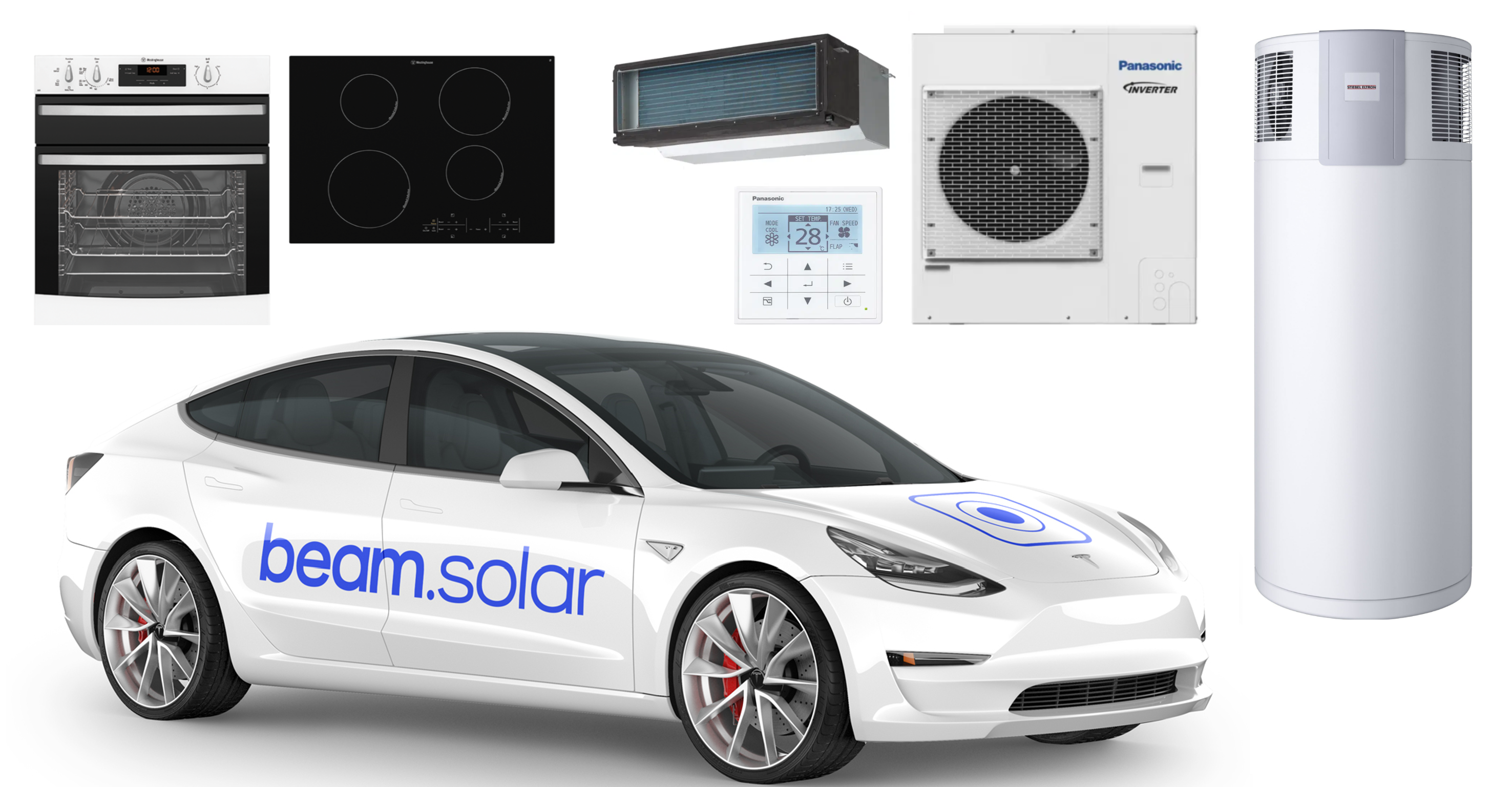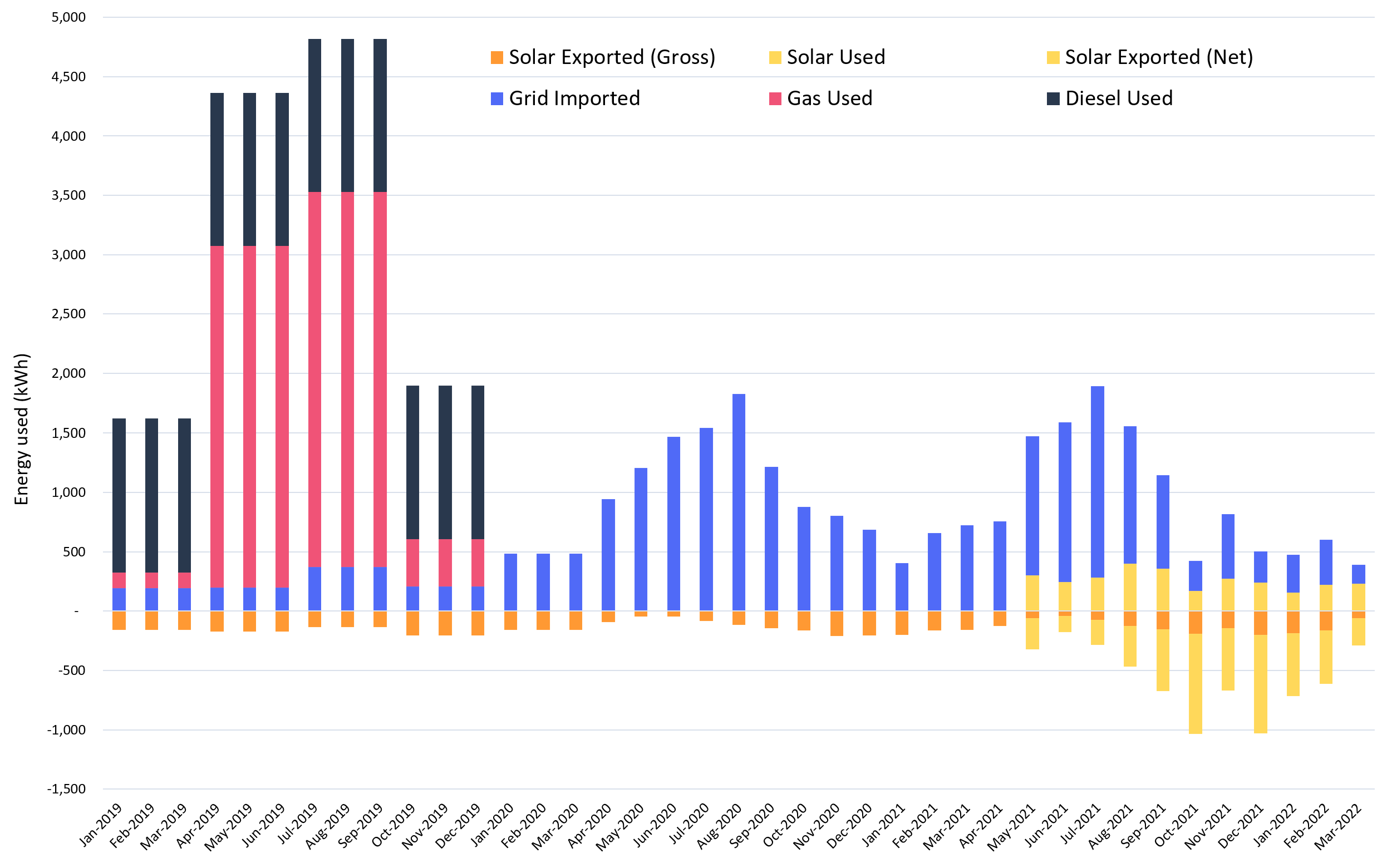With not one but two very good reasons for people in Europe to stop using gas (1 = climate change, 2 = the gas is mostly bought from Russia), I thought it would be a good time to write this blog. The blog, and a few more to follow, is about how we have electrified our home in Canberra and installed a shit load of solar. It's an evolving story and hopefully it provides some lessons to everyone who will eventually need to do the same thing (sooner = better). This first post is a bit of an intro before we get into the detail.
What is an electrified home?
But first, what is Electrification? This refers to converting equipment that burns fossil fuel for energy to equipment that just uses electricity. Electricity reached mainstream use more than a century ago and, despite its superiority, it's still not the main energy source for things like cooking, heating and transport.
 Second, why is Electrification important? We need to reduce our greenhouse gas emissions to avoid catastrophic climate change. Emissions can't be reduced materially for fossil fuels (carbon capture and storage or adding Hydrogen to natural gas = BS). Electricity emissions can be reduced almost completely with wind, solar, batteries and hydro. Therefore if everything is electrified, we can just focus on reducing the emissions of the electricity grid by installing more solar, wind and energy storage.
Second, why is Electrification important? We need to reduce our greenhouse gas emissions to avoid catastrophic climate change. Emissions can't be reduced materially for fossil fuels (carbon capture and storage or adding Hydrogen to natural gas = BS). Electricity emissions can be reduced almost completely with wind, solar, batteries and hydro. Therefore if everything is electrified, we can just focus on reducing the emissions of the electricity grid by installing more solar, wind and energy storage.
Electrification Moment
In 2018 we bought a house in Canberra that had a typical setup for a house in a cold Australian climate:
- Cooking = Gas cooktop + gas oven
- Heating = Ducted gas heater
- Hot Water = Instantaneous gas heater
- Vehicle = Hyundai i30 (Diesel)
As my partner and I both work in renewable energy / climate change we weren't stoked about this setup. However it did take more than a year to get everything sorted, and we changed everything at once at the end of 2019. We made the following changes:
- Cooking = Induction cooktop and electric oven
- Heating = Ducted reverse cycle air conditioning (heat pump)
- Hot Water = Heat pump with storage
- Vehicle = Tesla Model 3 (Electric)

Why electrify your home?
Before we get into the impact on energy use that these changes had, I should mention the quality improvement we got from electrifying everything as this was extreme in each case. Some of this was due to the fact that we are comparing old equipment to new equipment, but things like the induction cooktop or the electric vehicle just can't be compared to their fossil fuel ancestors. If you used them once you'd quickly find the money to make the change permanent.
It then took us another year and a bit to get a large solar system installed. We had a 1.2 kW system that was installed in 2012 on a gross feed in tariff and in May 2021 we added another 9 kW of solar on a net meter. This has given us three distinct periods to look at:
- 2019 - Fossil Home (electricity, natural gas and diesel)
- 2020 - Electric Home (electricity only)
- May 2021 to present - Renewable Home (electricity + solar)
How did electrification change our energy use?
The chart below shows our monthly energy use (kWh for all energy sources) covering these three periods up to today. You will notice there's not much granularity in 2019 as electricity and gas were billed quarterly. Fuel use is the same all year and is based on km travelled (I couldn't be bothered finding every fuel transaction from the period).

There's a lot to dig into with this chart and the topic in general. In following blogs we'll dig into the impact this has had on emissions and costs - both topics will have their own blog post. We'll also get into the other benefits such as quality, safety and impacts on time. More to come.